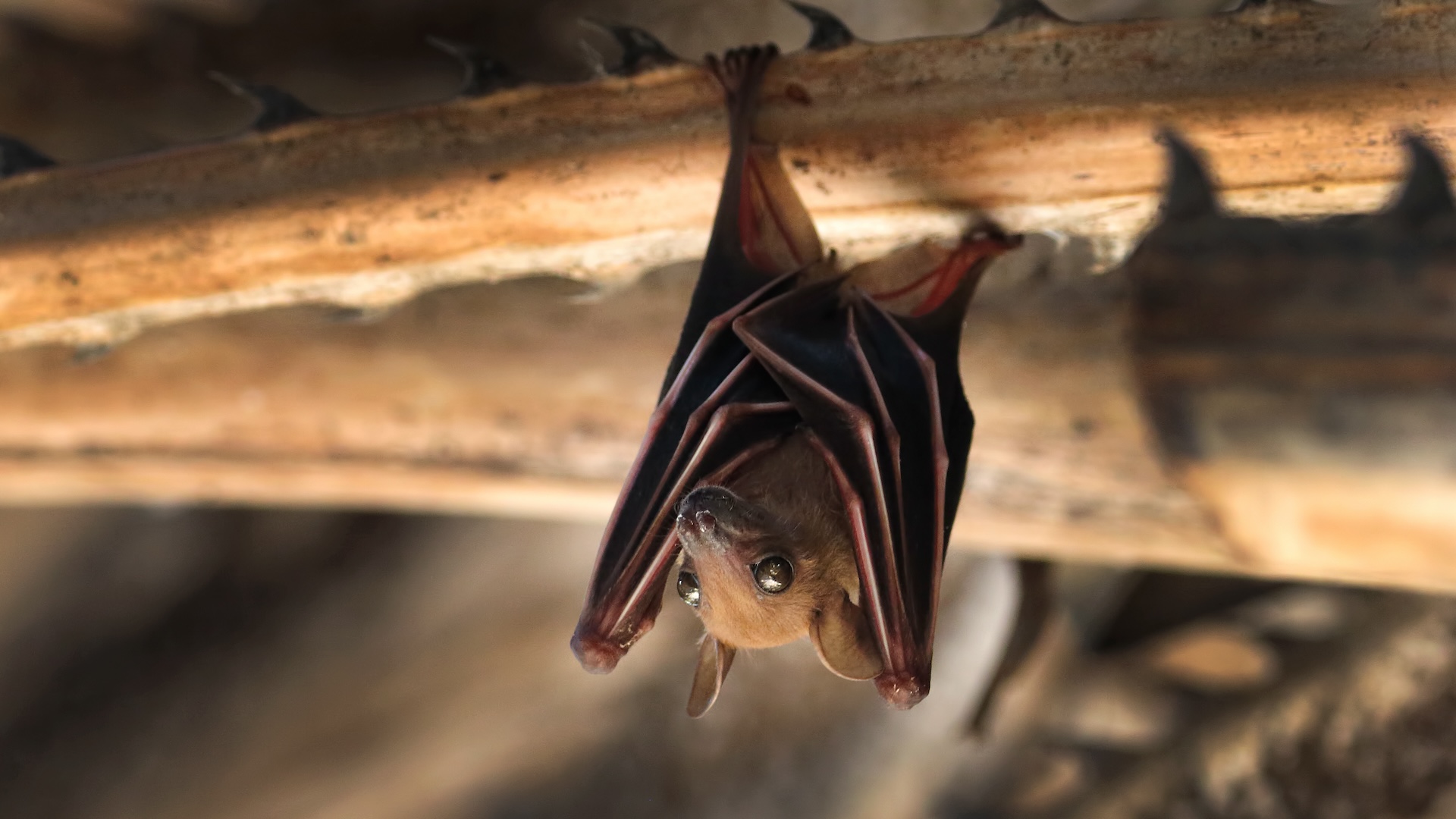
When bats aren’t flying, they often dangle from cave ceilings or the undersides of bridges. But why do bats sleep upside down?
This topsy-turvy behavior may result from the evolutionary journey bats took toward flight, said Tara Hohoff, a bat biologist and the coordinator of the Illinois Bat Conservation Program. “As bats evolved from land-bound mammals to taking flight, they started with gliding like flying squirrels,” Hohoff told Live Science.
The ancestors of modern bats might have climbed tall trees and dropped to glide between the trunks, likely evolving strong limbs for these ascents, Alexander Lewis, a bat researcher at California State Polytechnic University, Humboldt, told Live Science. The powerful arms of these gliding creatures evolved into wings over time, he explained.
However, because bats do not have hollow bones like birds do, they do not have as much capacity for lift during flight. As such, bats still generally “hang upside down to drop into flight,” Hohoff said.
Related: Which animals are evolving fastest?
Most people would find it challenging to hang from a ledge or any other surface, whether upside down or right side up. However, bats can hang upside down much more easily than humans can because of the way bats’ muscles, tendons and talons have evolved.
“When a bat finds a place to roost, it contracts muscles attached to its talons, which opens them,” Daniel Pavuk, a zoologist and the chair of biology at Bowling Green State University in Ohio, told Live Science. “As the talons touch the roosting surface, the bat relaxes its body. This allows the weight of its body to pull on the tendons connected to the talons.”
The result is that the talons grip the roosting surface. “The joints of the talons lock, and the weight of the bat’s body keeps the talons closed,” Pavuk said. In other words, bats spend minimal energy to hang upside down; their bodies are relaxed, and gravity does the work for them.
Unlike humans, bats can hang upside down for long periods, according to the Iowa Department of Natural Resources. Whereas an upturned pose would lead blood to pool in a person’s head, resulting in health problems over time, a bat’s compact size lets its heart easily pump blood throughout its body.
After hanging upside down became the favored method of rest for bats, this new lifestyle supported the evolution of several other traits, Hohoff said. For instance, “the skeletons of bats evolved to be lightweight for flight,” Pavuk said. “Because of this, their leg bones do not do well supporting their weight for extended periods of time.” By hanging upside down, bats do not have to rest their weight on their weak legs.
Roosting upside down also protects bats from some of their potential predators, Pavuk said. Hanging from hard-to-reach locations, such as cave ceilings, can help them avoid their enemies, such as owls, hawks and snakes.
Bats that are on the ground can still take off from a standing position, Pavuk said. But, “it is more difficult than initiating flight from a hanging-down position,” he explained.
However, some bats do not exclusively sleep upside down. For instance, “disk-winged bats in Central and South America have special suction cups on their thumbs that they use to adhere to the undersides of leaves, and do so at all sorts of angles,” Lewis said.
Additional research into the evolution of bat flight and the way most bats hang upside down “would be really interesting, since they are the only flying mammals,” Hohoff said. “There are some species that seem to have an easier time taking off from the ground, so studying what morphologically is different would be helpful to understand.”
